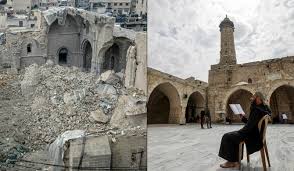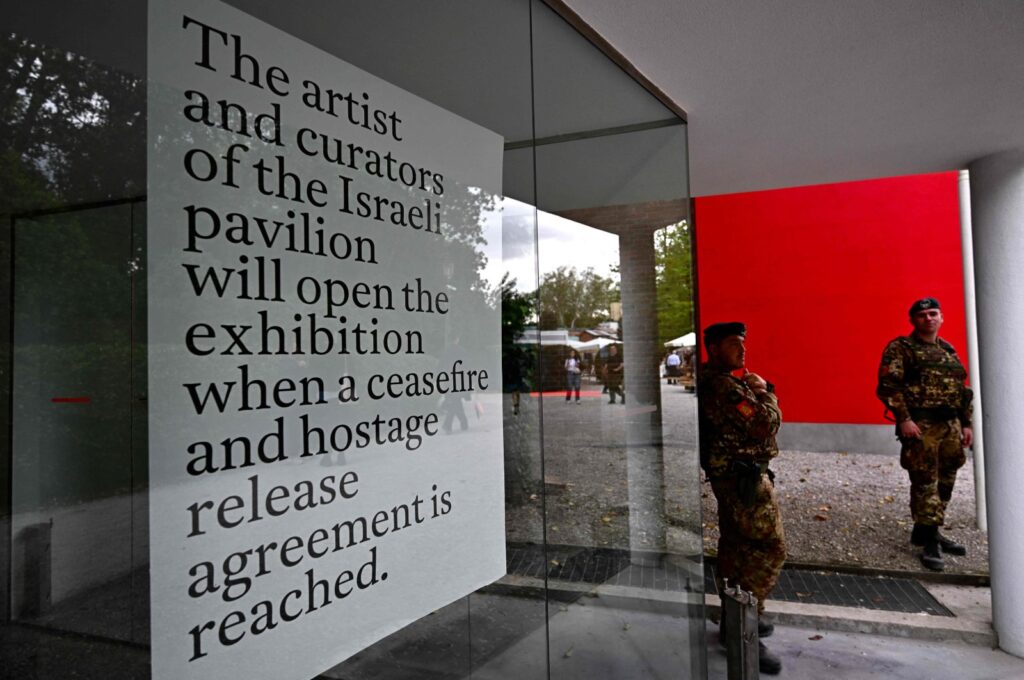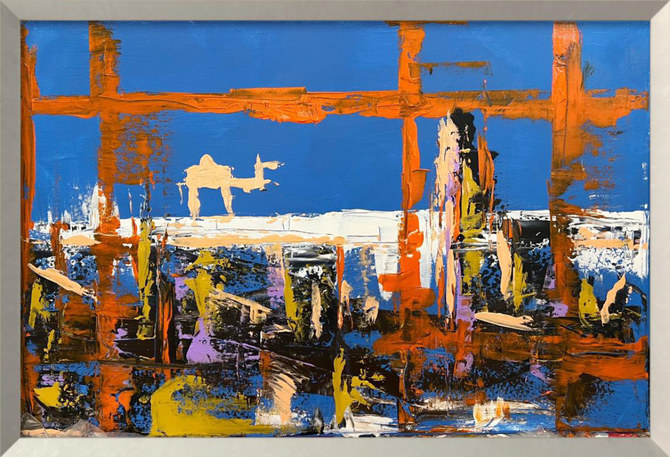
William Parry
A large black-and-white map depicts a string of coastal cities stretching from Gaza to Beirut, with the names of 30 towns and cities that have existed over the past three centuries. Two-thirds have a star beside them — which denotes that they no longer exist.
This first visual to A People by the Sea — the current exhibition running until May 31 at the Palestinian Museum near Ramallah — encapsulates what’s to come. Beyond is an impressive and detailed collection of artefacts, artworks and infographics, utilising an array of media to tell the story of the socio-economic development and subsequent occupation and destruction of Palestine’s coastal cities.
“We wanted to show to Palestinians and non-Palestinians that this was a vibrant Palestinian area of cultural, social and trade vitality, from the 18th century at least, open to the world and modernity and experimentation, unique in the Arab world,” says the museum’s director, Adila Laidi-Hanieh. “It is good for us Palestinians to appreciate what we were able to do and achieve before 1948, and [consider] what we could have achieved.”
Chronologically structured, the exhibition begins in the mid-18th century, with the rise of the autonomous ruler of northern Palestine, Daher al-Omar al-Zaydani. Though under Ottoman rule, local political entities that were quasi-independent from Constantinople’s control were allowed to form, and played a key role in facilitating the growth of the urban centres that would become Palestine’s coastal cities. Daher’s administration was based in the Galilee and he made Akka his capital in 1748.
A tryptic of videos called Urbanisation of Cities uses drone footage to pay tribute to, and provide a literal overview of, three forms of architecture that characterised Daher’s six-decade reign. These include the architecture of power, religion and trade, the combination of which promoted the area’s cultural development, religious tolerance and prosperity.
The rise of Jaffa forms the central and most intriguing element of the exhibition, given the variety of materials on display. These chart the legislative changes from Constantinople — modern day Istanbul — that gave root to the agricultural and socio-economic expansions that put Jaffa at the heart of Palestine for about a century.
They attest to the richness, diversity and trade-importance of Jaffa from the mid-19th century to its decline due to British colonialism, in the 1920s to 1940s, and Britain’s support for the Zionist Movement, culminating in the Nakba in 1948.
Jaffa at the Heart of the Mediterranean is a huge, animated infographic, set to a gentle soundtrack of the ebb and flow of waves and songs of seabirds. It shows the coastal region’s development over the 19th and 20th centuries, through the emergence of major trade routes between Palestine and Europe.
Palestinian merchants shipped cotton, wheat, oranges and barley, among other things, to Italy, Britain and other European destinations.
The display also shows the migration of people within Palestine, as well as immigration from neighbouring countries, as Palestine’s coastal cities grew in commercial stature. It concludes with the 1916 Sykes-Picot divisions, via which in 1922 the League of Nations granted Britain mandatory control over Palestine, “legitimising” its colonial exploitation of the country.
The accompanying displays include newspapers, cultural announcements including record releases and concert dates, railway tickets for the new Hejaz Railway network, details on the local artisan tile industry, photographs of locals enjoying the corniche and waterfront amenities, union calls for solidarity and action against British injustices, as well as materials concerning the Jaffa orange trade that was vital to the region’s growth and development.
There are a number of pieces of art interlaced throughout the exhibition, including The Dove by Nasser Soumi. Its title stems from the name sailors gave to Jaffa and is a rich canvas made from quicklime, indigo, fragments of seashells and citrus peel from Jaffa that speaks of identity, exile and longing.
A huge piece by Amir Zuabi, Cold Floors, covers an expanse of the gallery floor with stone and tile fragments. It is a bittersweet tribute to pre-Nakba Jaffa’s rising stature and inhabitants, particularly the city’s artisanal tile industry.
Between 1947 and 1948, Zionist militias demolished entire Palestinian neighbourhoods in Jaffa, along with hundreds of Palestinian coastal towns and villages, casting much of the destroyed homes into the sea. Zuabi and his son would walk along the coast, gathering fragments of tiles washed ashore. Cold Floors is essentially a map, a defiant reconstruction and celebration of Jaffa’s Palestinian neighbourhoods that were flourishing before the Nakba.
The remainder of the exhibition chronicles the massacres, destruction, fragmentation and displacement that the Nakba wrought on historical Palestine. While the exhibition is a lament for what was ultimately lost, it is at its heart a celebration of achievement, a rich and eclectic record of Palestine’s cultural and commercial achievements over several centuries despite being under the control of foreign powers, whether Ottoman, British or Zionist.
The exhibition is representative of director Laidi-Hanieh’s vision for the Palestinian Museum. “Because we are a museum, we can create this immersive experience and environment where you show the visitor what is in books, visual archives, in people’s memoirs.
“We are able to leverage all of this to create an object list which is translated into an exhibition, where you have access to all this information which is buried in an archive somewhere, in a book somewhere, in a Facebook post somewhere — but for the first time it’s all around you. And we can top it off by having the drone footage, video footage, interactive footage and commissioning artwork, so that you have this total experience that acts on your senses, acts on your cognition.”
The Palestinian Museum’s ability to pull together an engaging, comprehensive and important exhibition such as A People by the Sea is an achievement, given the challenges faced by Palestinian cultural institutions. It is an empowering act of cultural resistance that exposes and challenges the narratives of the coloniser.
Courtesy: thenationalnews








